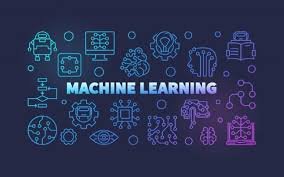Course Details

- ML Introduction
- What is Machine Learning?
- Types of Machine Learning (Supervised, Unsupervised, Reinforcement)
- Applications of ML
- Key Terminologies (Model, Training, Testing, Features, Labels)
ML Get Started
- Setting Up Machine Learning Environment
- Installing Python
- Python Libraries for ML (NumPy, Pandas, Matplotlib, Scikit-learn, TensorFlow, PyTorch)
- IDE Setup (Jupyter, Google Colab, VS Code)
- First Machine Learning Program (Basic Linear Regression)
ML Data Preprocessing
- Data Cleaning
- Handling Missing Data
- Handling Outliers
- Data Normalization/Standardization
- Data Exploration
- Descriptive Statistics
- Data Visualization (Histograms, Boxplots, Scatter Plots)
- Correlation Analysis
- Feature Engineering
- Feature Selection and Extraction
- One-Hot Encoding
- Feature Scaling (Min-Max, Standardization)
Supervised Learning
- Introduction to Supervised Learning
- Concept of Labels and Features
- Training vs Testing Data Split
- Evaluation Metrics (Accuracy, Precision, Recall, F1-Score)
- Linear Regression
- Simple Linear Regression
- Multiple Linear Regression
- Evaluation of Regression Models (MSE, RMSE, MAE)
- Classification Algorithms
- Logistic Regression
- k-Nearest Neighbors (k-NN)
- Support Vector Machines (SVM)
- Decision Trees
- Random Forests
- Naive Bayes Classifier
- Model Evaluation
- Cross-validation
- Confusion Matrix
- ROC Curve and AUC
Unsupervised Learning
- Introduction to Unsupervised Learning
- Clustering vs. Dimensionality Reduction
- Clustering Algorithms
- k-Means Clustering
- Hierarchical Clustering
- DBSCAN
- Dimensionality Reduction
- Principal Component Analysis (PCA)
- t-SNE (t-Distributed Stochastic Neighbor Embedding)
- Autoencoders
Reinforcement Learning
- Introduction to Reinforcement Learning
- Concepts: Agent, Environment, Actions, Rewards
- Markov Decision Processes (MDP)
- Q-Learning
- Value Iteration
- Q-Function and Bellman Equation
- Deep Q Networks (DQN)
- Deep Learning in RL
- Exploration vs Exploitation
Model Tuning & Optimization
- Hyperparameter Tuning
- Grid Search
- Random Search
- Bayesian Optimization
- Regularization Techniques
- L1/L2 Regularization (Ridge, Lasso)
- Dropout
- Early Stopping
- Ensemble Methods
- Bagging (Random Forests)
- Boosting (AdaBoost, Gradient Boosting, XGBoost)
- Stacking
Deep Learning for ML
- Introduction to Deep Learning
- Difference Between Machine Learning and Deep Learning
- Neural Networks Basics
- Feedforward Neural Networks
- Convolutional Neural Networks (CNNs)
- Image Classification using CNN
- Convolution and Pooling Layers
- Transfer Learning with Pretrained Models
- Recurrent Neural Networks (RNNs)
- Sequential Data (Text, Time Series)
- Long Short-Term Memory (LSTM) Networks
- GRU (Gated Recurrent Unit)
Natural Language Processing (NLP)
- Text Preprocessing
- Tokenization, Lemmatization, Stop Words Removal
- Bag of Words vs TF-IDF
- Text Classification
- Sentiment Analysis
- Spam Detection
- Text Clustering
- Advanced NLP
- Word Embeddings (Word2Vec, GloVe)
- Transformers (BERT, GPT)
- Named Entity Recognition (NER)
ML in Practice
- Deploying Machine Learning Models
- Saving and Loading Models (Pickle, Joblib)
- Creating REST APIs (Flask, FastAPI)
- Cloud Deployment (AWS, Google Cloud, Azure)
- Model Monitoring and Maintenance
- Tracking Model Performance Over Time
- Updating Models with New Data
- ML in Real-World Applications
- Predictive Analytics (Sales Forecasting)
- Recommender Systems (Netflix, Amazon)
- Computer Vision (Image Recognition)
- Natural Language Processing (Chatbots, Voice Assistants)
- Fraud Detection in Finance
Advanced Machine Learning Topics
- Anomaly Detection
- Techniques for Outlier Detection
- Applications in Fraud Detection, Network Security
- Transfer Learning
- Using Pre-trained Models for New Tasks
- Fine-tuning and Feature Extraction
- Self-Organizing Maps (SOM)
- Unsupervised Learning for Data Visualization
- Meta Learning
- Few-shot Learning
- Learning to Learn
ML Tools & Libraries
- Scikit-learn
- Overview of Functions (Classification, Regression, Clustering)
- Model Evaluation Tools (Metrics, Cross-Validation)
- TensorFlow
- TensorFlow Basics for Deep Learning
- Building and Training Neural Networks
- PyTorch
- Introduction to PyTorch Tensors
- Building and Training Models in PyTorch
- Keras
- Building Deep Learning Models with Keras
- Using Keras for Transfer Learning
ML Challenges and Research
- Current Challenges in Machine Learning
- Interpretability of Models
- Bias and Fairness in ML Models
- Model Generalization vs. Overfitting
- Future Trends in Machine Learning
- AutoML (Automated Machine Learning)
- Explainable AI (XAI)
- ML for Edge Devices and IoT
- Federated Learning


Leave a Reply